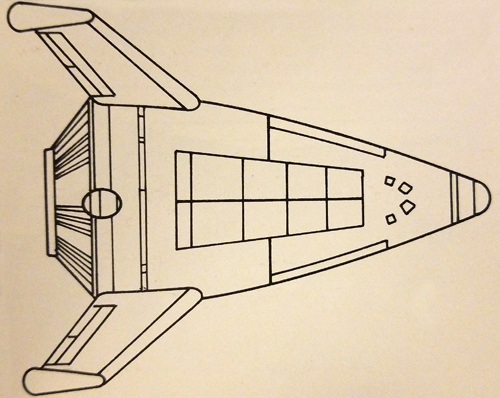Difference between revisions of "Lindbergh class (FASA)"
From Trekipedia
m |
|||
| (2 intermediate revisions by the same user not shown) | |||
| Line 1: | Line 1: | ||
| − | {{DISPLAYTITLE:''Lindbergh'' class}} | + | {{DISPLAYTITLE:''Lindbergh'' class (FASA)}} |
| − | + | {{ImageInfoBox2|name=''Lindbergh'' class|file=lindbergh_class-sfc.jpg|caption=''Lindbergh'' class ([[Star Trek: Spaceflight Chronology (Book)|SFC]])}} | |
| − | {{ | + | {{TableRow|title=Commissioned|data=[[2000s (FASA)#2003|2003]]}} |
| − | {{TableRow|title=Commissioned|data=[[FASA | + | {{TableRow|title=Advertising|data={{AmazonLink2|asin=0671790897}}}} |
| − | {{TableRow|title=Advertising|data={{ | ||
|}</div> | |}</div> | ||
| − | The ''Lindbergh'' class space ferry was launched in [[FASA | + | {{BannerFASA}} |
| + | The ''Lindbergh'' class space ferry was launched in [[2000s (FASA)#2003|2003]], filling the role of the old [[Space Shuttle (FASA)|Space Shuttle]] as the primary surface-to-orbit spacecraft. Early versions of the ''Lindbergh'' class were equipped with booster rockets, much like the Shuttle, but advances in early 21st century technology eventually eliminated the need them; the class was also equipped with eight cargo ports per side, for ready cargo access. The ''Lindbergh'' class played a vital role in the completion of the [[Orbital Power Satellite (FASA)|Orbital Power Satellite]] network, which guaranteed energy independence for [[Earth (FASA)|Earth]], as well as in the construction of orbiting satellite cities.<ref name="SFC"/> | ||
{{InfoBox|float=left|name=Specifications}} | {{InfoBox|float=left|name=Specifications}} | ||
{{TableRow|title=Length|data=61 [[meter|m]]}} | {{TableRow|title=Length|data=61 [[meter|m]]}} | ||
| Line 30: | Line 30: | ||
[[Category:Ship Classes]] | [[Category:Ship Classes]] | ||
[[Category:Human Vessels]] | [[Category:Human Vessels]] | ||
| + | [[Category:Books]] | ||
[[Category:Games]] | [[Category:Games]] | ||
[[Category:RPG]] | [[Category:RPG]] | ||
| − | |||
[[Category:FASA Timeline]] | [[Category:FASA Timeline]] | ||
Latest revision as of 07:43, 12 March 2021
The Lindbergh class space ferry was launched in 2003, filling the role of the old Space Shuttle as the primary surface-to-orbit spacecraft. Early versions of the Lindbergh class were equipped with booster rockets, much like the Shuttle, but advances in early 21st century technology eventually eliminated the need them; the class was also equipped with eight cargo ports per side, for ready cargo access. The Lindbergh class played a vital role in the completion of the Orbital Power Satellite network, which guaranteed energy independence for Earth, as well as in the construction of orbiting satellite cities.[1]
Specifications
| Length | 61 m |
| Beam | 51 m |
| Mass | 2.5 million kg |
| Payload Bay | 10,000 m³ |
| Maximum Payload | 1,000,000 kg |
| Crew | 6 |
| Passengers | 125 |
Performance
| Velocity | 11,000 m/second (Earth escape) |
| Range | Orbital to circumlunar |
| Landing/Takeoff | Horizontal Takeoff and Landing (HTOL) |
| Engines | Chemical Boost Single Stage to Orbit (SSTO) |
| Engine Configuration | Aerospike Plug nozzle with 24 coordinated small engines for greater efficiency and reliability |
Notes and References
- ↑ Goldstein, Stan et al (Authors). Spaceflight Chronology. Star Trek. Book. Wallaby Books. 1980.

